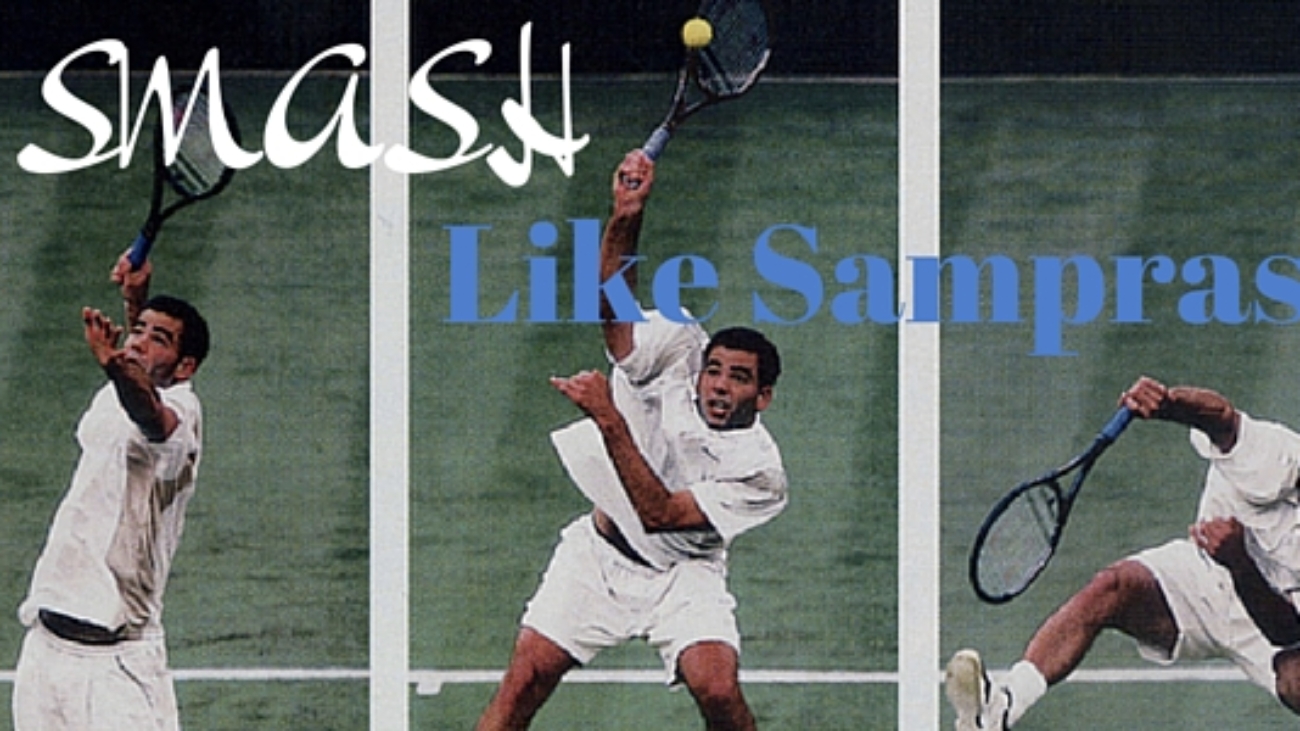Did you manage to read part 8 last week based on improving your smash we focused on talking about the importance of the unit turn. People seemed to really like it. If you haven’t read it yet, click here to have a read.
In the part we are going to look at the next key element to improving your smash, your movement. The smash is an essential weapon in your arsenal since you are looking to spend the majority of your time at the net and closing the net down.
Essential Elements
The key to improving your overhead is understanding, learning, and practising a three essential elements:
- Unit turn
- Movement (footwork)
- The arm swing
In this blog post will will focus on your movement for the smash, the arm swing will be covered in part 10.
Before I start discussing the movement, again I want to reiterate the necessity to learn and to use the continental grip around the net, on the serve, and on the overhead. The continental grip, along with a good unit turn as described next, is what allows greater racket acceleration and, therefore, ball speed.
Movement
Beyond the technical differences in the preparation, the biggest difference from the serve is that the player must move to the ball. How a player moves his/her feet to position themselves on any shot is key to achieving great success in your game. But on the overhead, the footwork is especially important and can be the difference between having no overhead and a having a very good one.
On the groundstrokes, players with good hands can sometimes get away with bad movement and still make a decent shot. But the overhead is a different story. Unlike the serve, which is hit from the same position on the court every time, the ball on the overhead is moving toward your side of the court. You can hit an overhead from literally anywhere on your side of the net. The ball is also descending from a much greater height than the serve toss. This is important because as the ball drops, it accelerates due to gravity. For these reasons it is vital to be ready when the ball passes through the hitting zone.
The ability to use Carioka (cross) and shuffle (side) are the keys to moving upward and back. These steps can also be used to move on diagonals across the court when the player needs to move sideways at the same time. If you want to maximize your ability to move on most overheads, do not rely only on shuffle steps alone. This is where most players make their first mistake.
Shuffling is an inefficient way of moving either forward or backward when needing to move over a greater distance. There are many instances where you will see a great player shuffle back or forward to hit an overhead, but usually it is on a ball where they have a lot of time, and/or not much movement either forward or back is required.
They come into play on all the shots in the game at certain times. They are just especially critical on the overhead.
Mastering the ability to rotate your body and then use these crossing steps will increase the distance you can cover – and your power on the overhead. The tough thing about gaining this ability is to be able to do it with the arms moving upwards into the air.
Backward Movement
The key to moving backward is to take a cross step backward with the front foot toward the baseline. So the front foot actually crosses over the rear foot in this first move.
In many ways, the best way to practice this crossstep movement is without the ball. Put yourself into the turn position with your arms up and move backward with the front foot crossing in front of the rear foot. Keep practicing it until you can run at full speed and still feel secure in your balance.
As you get more confident with this movement you can experiment with jumping from the back leg to make the upward motion more explosive. Most good players do this on most overheads because they are moving back at the time of the hit to deal with the lob attempts of opponents.
Even on a bounce overhead, the crosscourt movement is usually crucial to getting into position quickly. Even when you get what seems like a relatively easy overhead, get into the habit of taking that initial backwards cross step. You will be amazed how fast and far back you can get using the correct footwork.
Forward Movement
The key to forward movement is similar to the backward movement. When they have any significant distance to cover, the players will use the cross step pattern. Now the first step is forward with the rear foot.
The side on which the rear foot crosses the front foot depends on whether the player is moving forward to the left or right. When the player moves to the right and forward, the rear foot will cross to the right side of the front foot. When moving left and forward, the rear foot will cross to left side of the front foot. In each case, though, the rear foot is stepping towards the net.
Sometimes there is a combination of cross stepping and shuffling after the cross step, depending how far or how fast the player has to move. But, most importantly, the first reaction with your feet is the key. The cross step is what facilitates and maintains the unit turn as a player moves to position for the lob.
Tennis Holidays are a great way to make real progressions in your game, it is an intense week of learning new skills in the morning and putting them in to practise in the afternoons. Being able to play for 20 hours in one week means that you can really make changes in your game fast! Our Tennis Holidays our suitable for all levels whether you are a complete beginner through to county level players – everyone is welcome!













